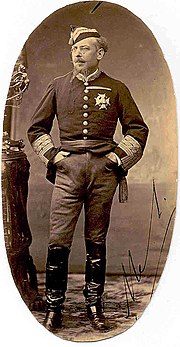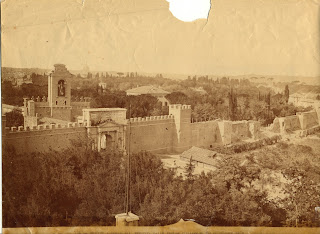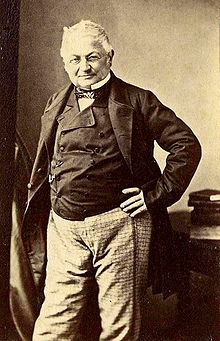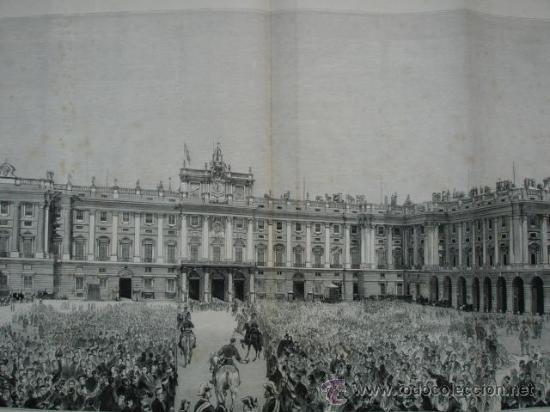Chapter III, Part III
Chapter III, Part III: Deployment
The French Plans
The French initial plans were quite ambitious, and had much promise and potential, if they managed to reach their objectives. An army formed by 350,000 soldiers would be deployed between Metz and Strasbourg and personally led by Napoleon III himself, although he would be assisted in the task of directing the army by Marshals Patrice de MacMahon and François Bazaine. Meanwhile, 150,000 soldiers would be deployed near the Pyrenées, with half of each assembled before the two only border crossings that could be used by large numbers of people at the same time: one of them would be deployed in Bayonne (western Pyrenees) and cross into the Vascongadas through Fuenterrabía, and would be led by Marshal François Certain de Canrobert, while the second army, led by General Louis Jules Trochu, would be deployed in Perpignan and enter Catalonia through La Junquera. All armies were also awaiting for the complete mobilization of the National Guard, which would allow them to increase their numbers.


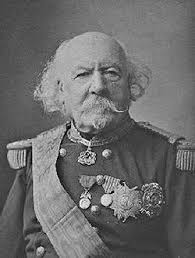
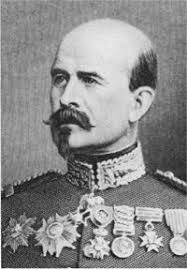
From left to right: Marshals Patrice de MacMahon, François Bazain and François Certain de Canrobert and General Louis Jules Trochu
The French mobilization was chaotic: the order of mobilization was just four days old when the declaration of war had been given, and the troops were still scattered throughout the nation, so there was a rush of movement of troops across France as they attempted to assemble the required troops in both fronts, which was doubly done in the case of Germany, as every day the attack against them was delayed was a day that they had to prepare themselves for battle. The rushing, however, contributed even more to the chaos, as many troops would arrive to their destinations without the required equipment (there were some soldiers who had not even been given their uniforms) while other soldiers remained in the different train stations due to delays.
Another important factor in the French deployment was that most officers had served in Algeria. This influenced much in the command method, because the army in Algeria had suffered constant ambushes. The French armies would thus establish lines of defensive fortresses between Metz and Strasbourg (especially to keep the control over the Lorraine region's coal deposits, which were important for the industries and the Navy) while the same was done in the cities near the Pyrenees border crossings. In this task, they were helped by some Spanish military officers that had been exiled with Isabel II, such as the Marquis of Novaliches (the defeated general in the Battle of Alcolea) and the Marquis of La Habana (who had replaced González Bravo as head of government in the few days between his resignation following La Gloriosa and Serrano's arrival to Madrid).

José Gutiérrez de la Concha, Marquis of La Habana
The French Navy (or the part of it that was still anchored near France, as many were protecting the French fishermen near Newfoundland) would be tasked with blocking the North German coast, as the small Norddeutsche Bundesmarine could do little to oppose it, as well as protecting the French coast from the Spanish Navy. Further plans for the future, such as the potential bombardment of Spanish ports like Barcelona, Bilbao, La Coruña, Cartagena or Cádiz, or a seaborne invasion of Germany, were also developed, but many felt they would not been necessary.
The Prussian Ploys
Only General Helmuth von Moltke would have guessed that, eighteen days after Kronprinz Friedrich Wilhelm read the mobilization order to the crowd gathered in Postdam on July 19th, there would be already 1,200,000 soldiers ready to battle, and 475,000 of them already deployed on the border. The monumental task of arranging such mobilization without problems had been up to the collaboration between the General Staff Communication Department and a civilian-military committee, which worked together to secure the railways in war times. The high number of soldiers and supplies being moved around meant several problems of transport for the Germans, but thanks to the efforts of the GSCD, the committee and General Moltke's own concern about the matter meant that these problems never became as serious as the ones suffered by the French.
The German forces would be separated in three great armies, led by General Karl Friedrich von Steinmetz, Prince Frederick Charles and the Kronprinz. These armies would travel together and start to disperse after 300 kilometers, to then be separated as they met different mountain ranges. The troop disposition would allow the Germans to lead the French into their own territory, and then use their advantageous positions to cut them off from France, surround them and finally destroy them. The resulting victory would then allow for a counterinvasion of France, which would give them the chance to strike further into enemy territory.

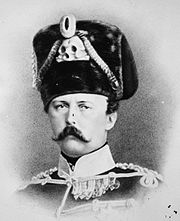
General Karl Friedrich von Steinmetz and Prince Frederick Charles of Prussia
The Spanish Daring
Around the same time the German troops were being deployed near the border with France, the 200,000 soldiers Prim had managed to mobilize were already near the two border crossings. General Prim himself, after temporarily delegating the Presidency of the Government to Minister Sagasta, took command of the troops that would defend the La Junquera crossing, while he was covered from the coast by a squadron led by Admiral Topete, who, despite his previous support for the Duke of Montpensier, volunteered to defend his nation and his new King.
The border crossing of Fuenterrabía would, meanwhile, be protected by troops led by Regent Francisco Serrano and placed in the Vascongadas. Their main maritime support would be the squadron led by Admiral Luis Hernández-Pinzón. There would also be another group that had decided to throw its hat in the defense of Spain: several groups of Carlists requetés. The news that Carlos VII, the man they regarded as the legitimate king, had supported the invasion of Spain and asked Napoleon III to support him to reestablish the Ancien Régime in Spain, had divided Carlism in twine. The majority compared Carlos VII's actions with the humiliating Bayonne Abdications, which had seen Carlos IV and Fernando VII abdicate in the person of Napoleon Bonaparte, and decided to side with the legitimate government they had tried to topple just several months ago, and one of Carlism greatest leaders, veteran General Ramón Cabrera, publicly declared from London “We prefer to serve the foreigner loyal to Spain before the traitor and afrancesado [1] Spaniard [2],” a sentence that gained him some popularity in Spain.
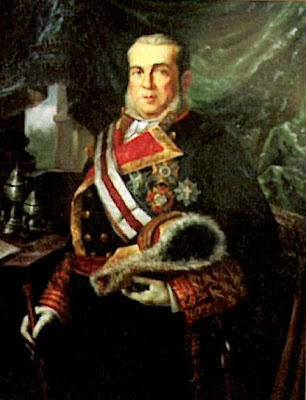

Admiral Luis Hernández-Pinzón and Carlist General Ramón Cabrera y Griñó
Other important factor would be the Spanish Royal Navy, which had just acquired several armored frigates and was in great shape: its main missions, besides supporting the troops' defense of Spain, would be to protect Spanish waters and attack the most important French naval bases, like Brest, Marseilles, Toulon, Oran or Algiers.
[1] The afrancesados were the Spaniards and Portuguese that supported the French invasion of Iberia and the appointment of Joseph Bonaparte as King of Spain in 1808, hoping that he would lead Spain away from the Enlightened absolutism of the Bourbons. The defeat of the Napoleonic troops in the Peninsular War led to the exile of most of them and the persecution of anyone that was suspected of collaboration with the French (even those that were offered the choice but rejected it), persecution that lasted for many years after the end of the war. Amongst them were famed painter Francisco Goya and dramatist Leandro Fernández de Moratín.
[2] Ironically, Carlos de Borbón was no more Spanish than Leopold: he had been born in Ljubljana, which is in RL Slovenia, and had never put a foot on Spain before, despite his claims to the crown.
The French Plans
The French initial plans were quite ambitious, and had much promise and potential, if they managed to reach their objectives. An army formed by 350,000 soldiers would be deployed between Metz and Strasbourg and personally led by Napoleon III himself, although he would be assisted in the task of directing the army by Marshals Patrice de MacMahon and François Bazaine. Meanwhile, 150,000 soldiers would be deployed near the Pyrenées, with half of each assembled before the two only border crossings that could be used by large numbers of people at the same time: one of them would be deployed in Bayonne (western Pyrenees) and cross into the Vascongadas through Fuenterrabía, and would be led by Marshal François Certain de Canrobert, while the second army, led by General Louis Jules Trochu, would be deployed in Perpignan and enter Catalonia through La Junquera. All armies were also awaiting for the complete mobilization of the National Guard, which would allow them to increase their numbers.
From left to right: Marshals Patrice de MacMahon, François Bazain and François Certain de Canrobert and General Louis Jules Trochu
The French mobilization was chaotic: the order of mobilization was just four days old when the declaration of war had been given, and the troops were still scattered throughout the nation, so there was a rush of movement of troops across France as they attempted to assemble the required troops in both fronts, which was doubly done in the case of Germany, as every day the attack against them was delayed was a day that they had to prepare themselves for battle. The rushing, however, contributed even more to the chaos, as many troops would arrive to their destinations without the required equipment (there were some soldiers who had not even been given their uniforms) while other soldiers remained in the different train stations due to delays.
Another important factor in the French deployment was that most officers had served in Algeria. This influenced much in the command method, because the army in Algeria had suffered constant ambushes. The French armies would thus establish lines of defensive fortresses between Metz and Strasbourg (especially to keep the control over the Lorraine region's coal deposits, which were important for the industries and the Navy) while the same was done in the cities near the Pyrenees border crossings. In this task, they were helped by some Spanish military officers that had been exiled with Isabel II, such as the Marquis of Novaliches (the defeated general in the Battle of Alcolea) and the Marquis of La Habana (who had replaced González Bravo as head of government in the few days between his resignation following La Gloriosa and Serrano's arrival to Madrid).
José Gutiérrez de la Concha, Marquis of La Habana
The French Navy (or the part of it that was still anchored near France, as many were protecting the French fishermen near Newfoundland) would be tasked with blocking the North German coast, as the small Norddeutsche Bundesmarine could do little to oppose it, as well as protecting the French coast from the Spanish Navy. Further plans for the future, such as the potential bombardment of Spanish ports like Barcelona, Bilbao, La Coruña, Cartagena or Cádiz, or a seaborne invasion of Germany, were also developed, but many felt they would not been necessary.
The Prussian Ploys
Only General Helmuth von Moltke would have guessed that, eighteen days after Kronprinz Friedrich Wilhelm read the mobilization order to the crowd gathered in Postdam on July 19th, there would be already 1,200,000 soldiers ready to battle, and 475,000 of them already deployed on the border. The monumental task of arranging such mobilization without problems had been up to the collaboration between the General Staff Communication Department and a civilian-military committee, which worked together to secure the railways in war times. The high number of soldiers and supplies being moved around meant several problems of transport for the Germans, but thanks to the efforts of the GSCD, the committee and General Moltke's own concern about the matter meant that these problems never became as serious as the ones suffered by the French.
The German forces would be separated in three great armies, led by General Karl Friedrich von Steinmetz, Prince Frederick Charles and the Kronprinz. These armies would travel together and start to disperse after 300 kilometers, to then be separated as they met different mountain ranges. The troop disposition would allow the Germans to lead the French into their own territory, and then use their advantageous positions to cut them off from France, surround them and finally destroy them. The resulting victory would then allow for a counterinvasion of France, which would give them the chance to strike further into enemy territory.

General Karl Friedrich von Steinmetz and Prince Frederick Charles of Prussia
The Spanish Daring
Around the same time the German troops were being deployed near the border with France, the 200,000 soldiers Prim had managed to mobilize were already near the two border crossings. General Prim himself, after temporarily delegating the Presidency of the Government to Minister Sagasta, took command of the troops that would defend the La Junquera crossing, while he was covered from the coast by a squadron led by Admiral Topete, who, despite his previous support for the Duke of Montpensier, volunteered to defend his nation and his new King.
The border crossing of Fuenterrabía would, meanwhile, be protected by troops led by Regent Francisco Serrano and placed in the Vascongadas. Their main maritime support would be the squadron led by Admiral Luis Hernández-Pinzón. There would also be another group that had decided to throw its hat in the defense of Spain: several groups of Carlists requetés. The news that Carlos VII, the man they regarded as the legitimate king, had supported the invasion of Spain and asked Napoleon III to support him to reestablish the Ancien Régime in Spain, had divided Carlism in twine. The majority compared Carlos VII's actions with the humiliating Bayonne Abdications, which had seen Carlos IV and Fernando VII abdicate in the person of Napoleon Bonaparte, and decided to side with the legitimate government they had tried to topple just several months ago, and one of Carlism greatest leaders, veteran General Ramón Cabrera, publicly declared from London “We prefer to serve the foreigner loyal to Spain before the traitor and afrancesado [1] Spaniard [2],” a sentence that gained him some popularity in Spain.
Admiral Luis Hernández-Pinzón and Carlist General Ramón Cabrera y Griñó
Other important factor would be the Spanish Royal Navy, which had just acquired several armored frigates and was in great shape: its main missions, besides supporting the troops' defense of Spain, would be to protect Spanish waters and attack the most important French naval bases, like Brest, Marseilles, Toulon, Oran or Algiers.
[1] The afrancesados were the Spaniards and Portuguese that supported the French invasion of Iberia and the appointment of Joseph Bonaparte as King of Spain in 1808, hoping that he would lead Spain away from the Enlightened absolutism of the Bourbons. The defeat of the Napoleonic troops in the Peninsular War led to the exile of most of them and the persecution of anyone that was suspected of collaboration with the French (even those that were offered the choice but rejected it), persecution that lasted for many years after the end of the war. Amongst them were famed painter Francisco Goya and dramatist Leandro Fernández de Moratín.
[2] Ironically, Carlos de Borbón was no more Spanish than Leopold: he had been born in Ljubljana, which is in RL Slovenia, and had never put a foot on Spain before, despite his claims to the crown.
Last edited:






